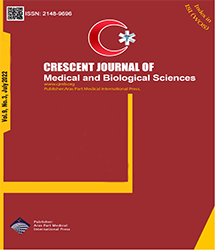
| Original Article | |
| Motorized Leg Length Discrepancy Measure: A New Device for Clinical Use – A Cross-sectional Study | |
| Yaghoub Salekzamani1, Nargess Abolghassemi Fakhree2, Afshin Ebrahimi3, Hamed Heravi4, Neda Dolatkhah1 | |
| 1Physical Medicine and Rehabilitation Research Center, Aging Research Institute, Tabriz University of Medical Sciences, Tabriz, Iran 2Physical Medicine and Rehabilitation Specialist, Faculty of Medicine, Tabriz University of Medical Sciences, Tabriz, Iran 3ICT Research Center, Faculty of Electrical Engineering, Sahand University of Technology, Tabriz, Iran 4College of Engineering, Design and Physical Sciences, Brunel University London, Uxbridge UB8 3PH, UK |
|
|
CJMB 2022; 9: 161-167 DOI: 10.34172/cjmb.2022.27 Viewed : 3163 times Downloaded : 3518 times. Keywords : Pelvis, Leg length inequality, Weight-bearing, Spiral cone-beam computed tomography |
|
| Full Text(PDF) | Related Articles | |
| Abstract | |
Objectives: This study aimed to construct a device that could measure leg length discrepancy (LLD) automatically. Materials and Methods: The LLD measure device measures LLD with pelvic-tilt method (Program 1) and weight-based method (Programs 2 & 3). Tests were done in 3 phases. 1: Two examiners using the LLD Measure device made -50 to 75 mm artificial LLD in two healthy subjects measuring the degree of pelvic tilt and the load bearing of lower limbs. 2: Sixteen healthy volunteers were asked to stand on the device to measure LLD with program 2 and then with both knees extended to measure LLD with program one. 3: 32 patients who had underwent lower limbs CT scanogram enrolled, and the LLD measurement with program 1 compared with those obtained by CT scanogram. Results: Data"s obtained in the first phase showed excellent repeatability (intra-class correlation coefficient [ICC] > 0.9) and very good reproducibility (ICC > 80%) except for measuring the limb load while both knees were extended (ICC ≈ 60%). In the second phase, we found no statistically significant difference between measuring LLD using programs 1 and 2 (P = 0.49). In the third phase, there was no statistically significant difference between measuring LLD using program 1 and CT scanogram (P = 0.80). Conclusions: We have developed a device to measure LLD semiautomatic with less need for examiner expertise. The results of our new device would be reliable and accurate compared to CT measurements. |
Cite By, Google Scholar
Google Scholar
PubMed
Online Submission System
 CJMB ENDNOTE ® Style
CJMB ENDNOTE ® Style
 Tutorials
Tutorials
 Publication Charge
Medical and Biological Research Center
About Journal
Publication Charge
Medical and Biological Research Center
About Journal
Aras Part Medical International Press Editor-in-Chief
Arash Khaki
Deputy Editor
Zafer Akan



















